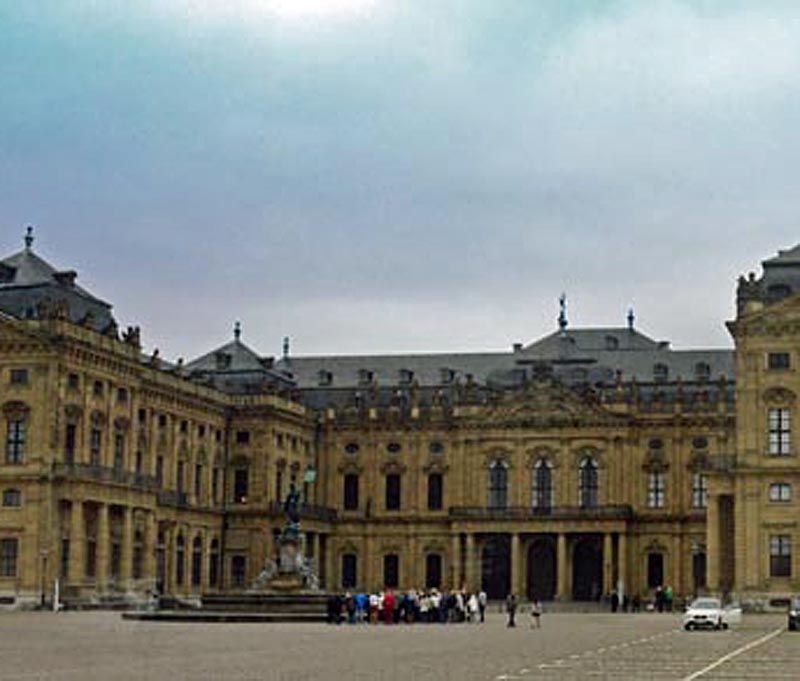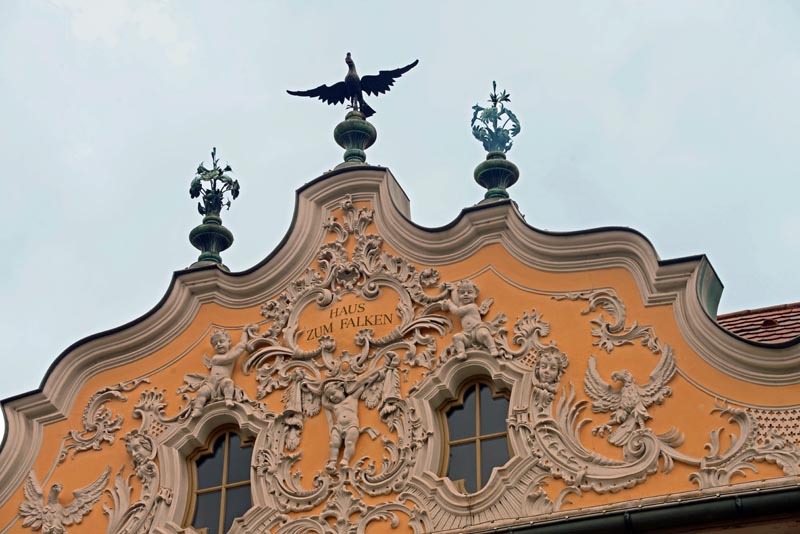|
Viking provided buses for many of our shore excursions. But this send off was unusual. CLICK HERE TO SEE
The butcher, the baker and the candlestick maker? No actually the Captain, Cruise Director, Head Chef, cook and our very favorite two servers were there to see us off. Does this mean that the boat will not be there when we get back and we walk the rest of the cruise?

Dating to the 12th century, the Marienberg Fortress is a prominent landmark on the Main river in Wurzburg, Germany. The mighty Fortress Marienberg is the official symbol of Wurzburg and served as a the fort-like home of the prince-bishops for nearly five centuries

Note the vineyards on the slopes below the castle.


Among Wurzburg’s many notable churches is the Kappele, a small Baroque/Rococo cathedral (chapel) perched on a hill facing the Marienberg Fortress and the city center. One of its most interesting side-chapels contains the tomb stones of Rudolf II von Scherenberg (1495) and Lorenz von Bibra (1519)


Another significant point-of-interest is the Wurzburg Residenz, a vast compound on the eastern edge of the town. This palace is so big, even using a wide angle lens, I had to do a panorama, linking three different photos together to get it all. It was constructed from 1720 to 1744. The occupants were the same ones that originally occupied the Marienberg Fortress.


Unfortunately, no photos were allowed inside the Residenz. The following pictures are from a postcard folder purchased in the gift shop and scanned into this web site. Note: There were no copyright notices on the folder but I would be cautious about further reproducing them. They are in no particular order. The descriptions are from the cards.

Right hand alter paining

Imperial Hall


Season putti, representing Spring, Summer, Fall and Winter


Staircase ceiling fresco
Detail Europe



White Room with Stucco decoration.
Staircase built between 1737 and 1745.

Staircase fresco
Detail America
Garden Room with ceiling fresco
Green Room

Garden
Room ceiling Fresco


Audience Room of the Southern Imperial Room

Court Church
Imperial Hall ceiling fresco Apollo the Sun God

Mirror Cabinet

Ceiling
fresco staircase
Okay, enough with the postcards, back to the Skunk’s photos.
The back of the Residentz, taken from the garden

The entry gate to the gardens


The topiary of the trees was distinctive. I expected hem to start spinning like tops at any time. Under every tree was a religious sculpture.

There were many other sculptures
through the garden as well.



Fountains and flowers were tastefully placed.

Wurzburg, I will always remember it a s the city of pointy things! Church steeples were every where you looked. There a seven, yes, count them, 7 in this one photo. And that does not include the little ones around the big ones.


Constructed in 1805 of limestone this obelisk stands 45 feet tall and sits
in the center of the marketplace. The reliefs portray women transporting food
and drinks reflecting the everyday happenings in the marketplace.

Church of St. Mary’s. The red and white motif is distinctive.


These two towers belong to St. Kilian, the fourth largest cathedral in Germany. This cathedral was destroyed in 1945 but was rebuilt and consecrated in 1967. You can see on of the additional 2 spires in the back.

There was even a scale model in the courtyard to help you find your way.


and some interesting sculpture. Maybe depicting the bondage of man? Note the water in his lap. Guess if I have been tied up that way I would have peed my pants as well!



Views of the rear spires of St. Kilian

Wurzburg gets extremely noisy in a nice way around noon every day. All the cathedral and church bells start ringing. CLICK HERE TO ENJOY THE SOUNDS

The Neumünster church was built in the 11th Century as a Romanesque Basilica. It is constructed on the site where 798 Irish Missionaries from Franconia were murdered. They had been martyred in 689 AD and included St Killian, St Kolonat and St Totnan

There are five images represented on the exterior of this church. The center is obviously God. I was unable to determine who the remaining four are but they may be St. Kilian, St. Kolonat, St. Totnan, and Walther von der Vogelweidee. These are the four burred under the church. Interestingly, two are placed at the same elevation as God.






The Old Main Bridge. Statues of saints are spaced along it. It was originally built in1488 with a wood superstructure. The wood was gradually replaced with stone between1512 and 1703. There are similarities to the Charles Bridge in Prague.

This blue postal drop box caught my eye.


A Rathaus is a town hall or actually a Council Hall. A Ratskeller is a council cellar or wine cellar. Always below street level and usually featuring stone or brick arches which support the ceiling.



Every city has a May pole. May first is a holiday throughout Europe, celebrating the coming of Summer.








Other interesting sculpture and architecture in Wurzburg.

Perhaps this sculpture is pointing the way to Hassfurt and Bamburg, our next stop.
Bamburg & Hassfurt
|

